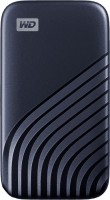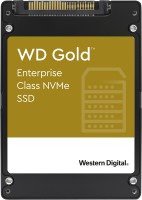SSD WD series Blue (for mass consumption)
prices on 10 modelsWD Blue
WD has masterfully organized its range of drives using a colour scheme that everyone can understand - blue and green models are designed for the consumer segment, followed by black ones designed for gamers, and red and gold ones are created with an eye on NAS storage and servers. In general, everything is logical and understandable. What is not entirely clear is how blue models differ from green ones, and why are they more expensive?
 |
As WD explains, green models are the most entry-level. Typically, such drives are chosen for overclocking an old PC or laptop, in which the OS was installed on an old and clumsy hard drive. Blue SSDs are usually built around higher quality flash memory and use more advanced memory controllers. For example, if the popular SATA SSD WDS240G2G0A from the green line has a low-cost controller Silicon Motion SM2258XT, then the slightly more status WD Blue WDS500G2B0A uses a Marvell 88SS1074 controller with a DRAM buffer. Thus, on paper, both drives look almost identical, but in reality, the blue model is much less prone to speed drawdowns when working with large data arrays.
WD Blue SSDs offer a maximum capacity of up to 4TB, sequential read speeds of up to 560MB/s (for models with a SATA connection) or 3300MB/s (note: M.2 brackets). You will not see such speeds in the WD Green series. They also have a higher rewrite resource and increased uptime, and more modern models with support for the NVMe interface predominate in the lineup. All this said, the Blue series is designed for the widest range of applications, from gaming and multimedia to working with a variety of creative applications.






